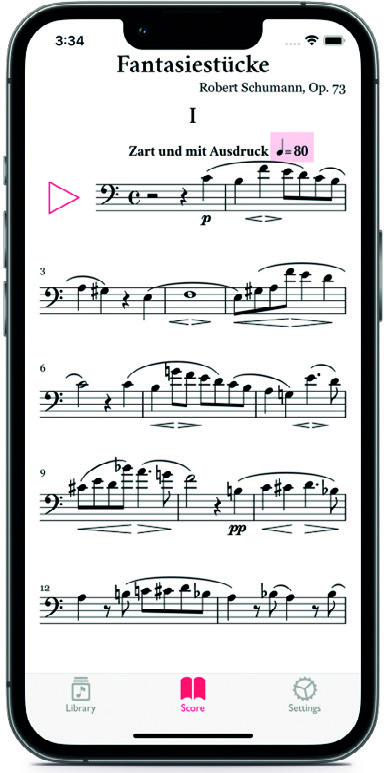
Recorded accompaniments for soloists to play along with are not new. The first Music Minus One recording was made in 1950, and the series has since grown to encompass nearly 900 classical and jazz titles.
As a student, I used to love practising Mozart’s Horn Concertos with a Music Minus One album from my local library. Hearing myself accompanied by an orchestra opened up a whole new world of sound and was great fun, but it had one major drawback: the tempo was fixed and allowed no room for rubato. Cadenzas were particularly problematic as the pause for improvisation was always the same length, concluding with a bar of loud clicks to coordinate the re-entry. So, for more musical results, it was still necessary to work with a real pianist.
This may not be true for much longer. By harnessing the power of artificial intelligence, recorded accompaniments can now match the natural ebb and flow of live performance by using a standard smartphone that ‘listens’ to the soloist. At the forefront of this revolution is the pianist and programmer Juho Pohjonen, whose new app MyPianist features his own recordings alongside those of his brother and fellow pianist Joonas Pohjonen.
Together, the Pohjonens have already recorded nearly 400 works by composers from Bach to Bartók, encompassing sonatas, concertos and character pieces for no fewer than 13 instruments. As well as core repertoire favourites, they have delved into lesser-known corners of their repertoire to unearth a wealth of rarities. ‘Our repertoire is largely driven by user requests’, explains Juho.

I spent a happy afternoon putting the app through its paces in horn pieces by Mozart, Schumann, Scriabin, Saint-Saëns and Glazunov. It is possible to listen to the accompaniments via headphones or speakers, though there is a slight delay when using Bluetooth, so headphones are recommended.
The results are impressive. Rich sound-quality is complemented by the Pohjonens’ excellent performances, and their playing really does respond to the soloist’s nuances. As an experiment, I tried introducing some radical tempo changes to see how the app would cope. The accompanist quickly picked up each new tempo to match me.
I was particularly intrigued to hear how MyPianist would handle silences. A good example can be found in Saint-Saëns’ Romance Op. 36, which features a long accelerando culminating in a free dialogue between horn and piano that requires acute listening and coordination skills. I didn’t find the app quite as responsive as a real pianist, but it came pretty close.
Glazunov’s Rêverie poses an even greater challenge, as it demands a lot of rubato and features some extreme tempo changes. Between bars 29 and 36, the player is asked to speed up from crochet = 66 to 160, then return to crochet = 66 on the last beat of bar 38. I found the stringendo relatively easy to coordinate, but the app kept dragging at the a tempo.
‘Programming the app involved overcoming several challenges’, says Juho. ‘Tasks that are seemingly simple for humans, such as focusing on the soloist’s sound while filtering out the accompaniment, were surprisingly difficult to implement in practice. Detecting note onsets such as bow changes was another tough problem to solve. Basically, any task that’s straight forward for humans presented a unique challenge for the app, and vice versa!’
In PRO mode, MyPianist offers a range of customisable settings for practice and performance. The practice assistant displays detailed feedback about your rhythm and intonation, and if you’re struggling with a particular passage, you can create a practice loop to repeat until you’ve mastered it. In performance mode, it’s possible to adjust the accompanist's sensitivity, synchronisation and timing of page turns. You can even transpose pieces into different keys – a particularly good exercise for horn players.
MyPianist is currently only available on iOS, though Android users can download a beta version and a Windows app is under development. Adapting MyPianist for singers is also on the Pohjonens’ roadmap, though Juho says ‘preliminary testing has shown this would require significant modifications to meet their specific needs’.
Juho does not believe AI will ever replace the role of the human accompanist, but sees MyPianist as a tool: ‘Ultimately, our goal is to provide diverse, high-quality repertoire that allows players to engage in a dynamic musical dialogue, anytime they want.’
MyPianist is available on the App Store and Google Play. Subscriptions are priced at £4.99 per month or £28.49 per year.
mypianist.app




